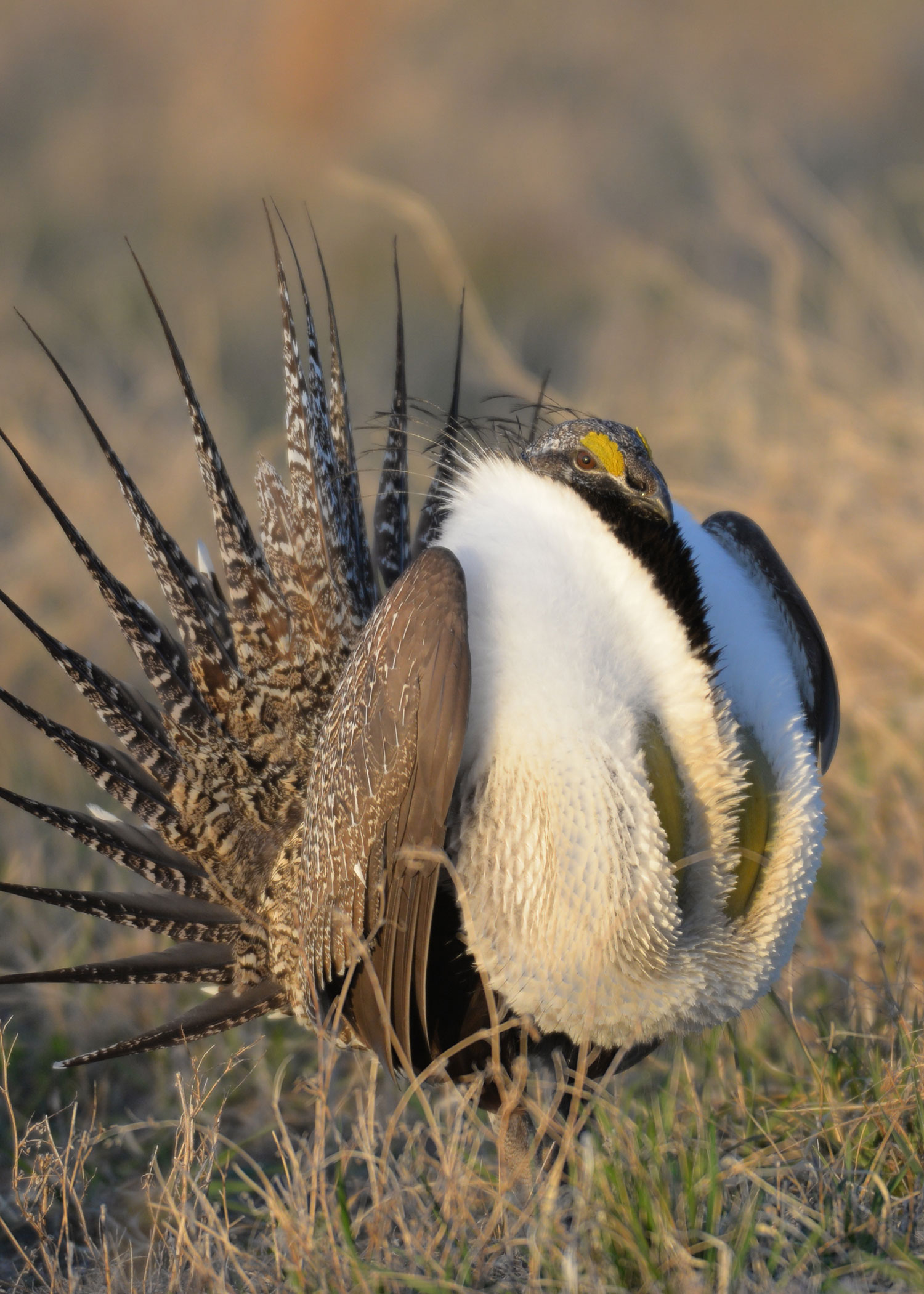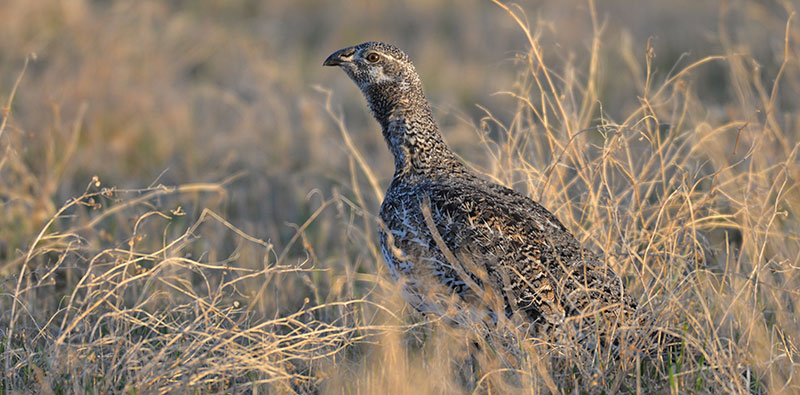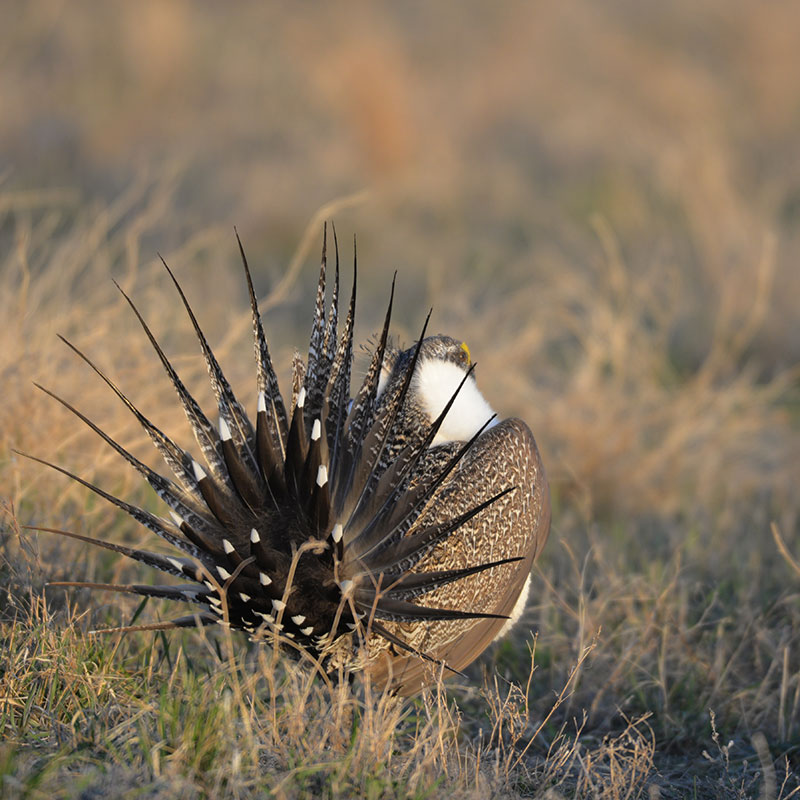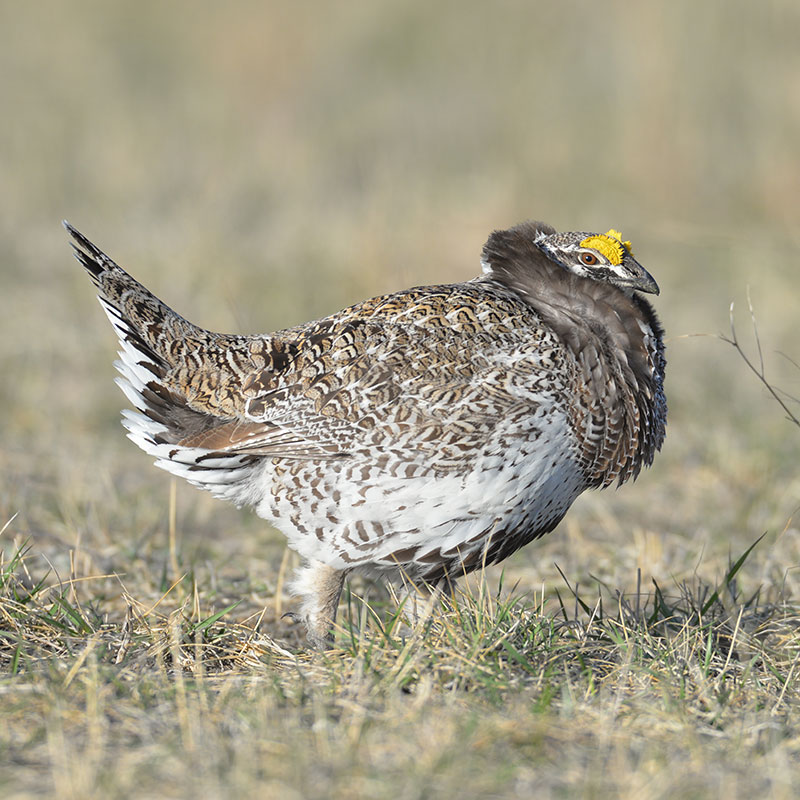Last of the Leks
Ron Wilson

While it’s premature to write an obituary for sage grouse in southwestern North Dakota, wildlife biologists have seen few, if any, indicators signaling a comeback in a population in slow decline for nearly two decades.
“I know some people have said the sage grouse population in North Dakota is on hospice, and I think that’s probably an accurate thing to say,” said Jesse Kolar, North Dakota Game and Fish Department upland game management supervisor in Dickinson. “I think the only saving grace we have is that Montana and South Dakota still have sage grouse connected to our population, so we could hope that those birds would source into our population. However, in the last couple of years, those populations haven’t been doing as well. South Dakota shut down their hunting season like us due to declines, and Montana has seen similar declines right across the border.”
To get the best population estimate of sage grouse in southwestern North Dakota, wildlife biologists have for years started “listening runs” in mid-March looking for sage grouse leks, followed by counting the number of birds in attendance on those strutting grounds beginning April 1.
“Unfortunately, today we’re down to just two remaining leks that we know of,” Kolar said on April 3 in southwestern Bowman County. “Last year there were 23 males on those two leks. This year our preliminary counts have been even lower. The lek where we saw 13 birds last year had about three so far. It’s early, so maybe we’ll see more later in the season, but it doesn’t seem promising.”
North Dakota is on the eastern edge of the birds’ range where habitat and climatic factors limit sage grouse success and expansion, so their numbers in the state have never been staggering. Even so, the birds have been around for eons and even considering their end is disheartening.
“Sage grouse are very emblematic, iconic, beautiful birds that have unique dancing rituals that surprise those people lucky enough to have seen them display,” Kolar said. “Like the struggling prairie chicken population in northeastern North Dakota, it’s hard to think of letting go of sage grouse in this part of the state.”
Kolar said biologists measure North Dakota’s sage grouse population through spring lek counts because the birds are sparse on any landscape and measuring them in summer or fall is difficult.

A hen sage grouse watches male grouse display on a lek
“In the spring, they’re territorial, they’ll go to the same territorial leks and we’re able to monitor males from year to year to year,” he said. “The population in North Dakota could blip out according to our lek counts, but we’ll still probably have sage grouse wandering in from South Dakota and Montana leks even after ours would zero out. We’re probably going to have sage grouse quite a few years into the future, but just not the numbers that we used to have and potentially no more breeding population, just vagrants.”
The last time more than 100 males were counted on leks in North Dakota was 2007 when 199 were in attendance. Since then, their numbers have dropped significantly and there were years the totals never reached double digits.
Game and Fish Department wildlife managers haven’t sat idly by as sage grouse numbers slowly declined over time. In the last 20 years, for example, the agency was involved in habitat improvement and reclamation projects to help bolster the grouse population.
“Most recently, the Game and Fish invested quite a bit of time and money trying to translocate birds from Wyoming to North Dakota,” Kolar said. “We brought in over 300 sage grouse in a period of four years, including broods that we moved with hens so they could acclimate young. While it didn’t seem like it was enough to get our population back to where we wanted it to be, it did seem like it slowed the bleeding.”
Kolar said the lesson learned was that the Department would have needed to translocate many more birds for many more years, which wildlife managers weren’t willing to commit to without first improving larger blocks of habitat.
North Dakota had its first sage grouse hunting season in 1964 and it was closed just once, in 1979, before being shut down indefinitely in 2008. The season, a three-day hunt the majority of those years, never attracted a wide audience, maybe 100 or so hunters annually. Since 1980, the highest number of grouse harvested in one season was 71 birds in 1983. In 2007, conceivably the last season, only 21 birds were taken.


